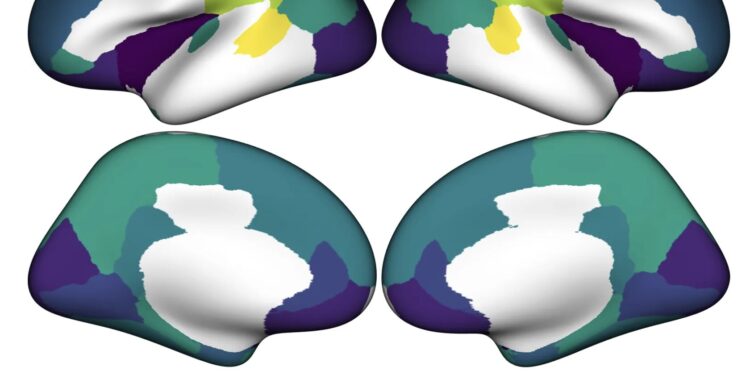Alterations in cortical thickness in multiple brain regions – darker colors indicate greater reduction in cortical thickness, linked to inequalities. Credit: King’s College London.
The distribution of wealth among different people living in specific geographic regions has changed significantly in recent decades, with some segments of the population benefiting more than others from economic growth. In parts of the United States, the United Kingdom, and various European countries, the distribution of wealth has become increasingly unequal.
An unequal distribution of wealth essentially means that there is a significant disparity in the income and resources of the general population, with some people earning good salaries and others living in the same place struggling to meet their basic needs. This inequality is usually measured with a value ranging from 0 to 1, known as the Gini coefficient, where 0 represents perfect equality and 1 represents extreme inequality.
Researchers from King’s College London, Harvard University and the University of York recently conducted a study aimed at exploring the possible impact of living in a society where wealth is unequally distributed on brain development in late childhood and pre-adolescence. Their findings, published in Natural mental healthsuggest that living in places with high income inequality is associated with differences in the structure of certain brain regions, which could in turn predict the emergence of mental health disorders.
“We recently wrote a conceptual study on how inequalities can influence mental health,” Divyangana Rakesh, first author of the recent paper and senior lecturer at King’s College London, told Medical Xpress. “As a developmental cognitive neuroscientist, this made me curious about the neurobiological pathways underlying this link. With the advent of datasets like ABCD, it became possible to test this kind of question.”
For their study, Rakesh and colleagues analyzed data from the ABCD dataset, collected from more than 8,000 children aged 9 to 10 living in 17 US states, as well as the Gini coefficients for those states. The data analyzed included magnetic resonance imaging (MRI) scans showing the thickness, area and volume of specific regions of the children’s brains, as well as functional magnetic resonance imaging (fMRI) scans showing the connections between 12 key regions of their brains.
Alterations in the surface area of the cortex – darker areas indicate a greater reduction in surface area, linked to inequalities. Credit: King’s College London.
In their analyses, the researchers controlled for other factors that may influence children’s brain development, such as family income, education, access to health care, and incarceration rates in their home countries. Additionally, they looked at the children’s reported mental health 18 months after the brain scans were collected.
“While many studies have examined links between individual dimensions of socioeconomic status (e.g., family income or parental education), ours is an important contribution because it links a structural feature of a society to the structure and functioning of children’s brains,” Rakesh said. “Our results highlight that structural inequalities, beyond family income, are associated with children’s brains.”
The results of the analyzes carried out by Rakesh and colleagues suggest that living in an unequal society is associated with a thinner cortex (i.e. the outer layer of the brain), as well as significant differences in the surface area of different brain regions. Additionally, communication between certain brain networks appears to be impaired in children living in places with greater income inequality.
The differences the researchers observed could partly explain the relationship they found between statewide inequality and children’s mental health, including the emergence of disorders among children living in unequal environments. In the future, the results of this study could inform the development of interventions aimed at promoting greater equality or promoting the healthy development of children living in unequal societies.
“In future studies, I would like to replicate these results using data collected in the UK as well as international data if possible,” added Rakesh. “Additionally, I plan to test associations with longitudinal brain development.”
Written for you by our author Ingrid Fadelli, edited by Gaby Clark, and fact-checked and revised by Robert Egan, this article is the result of painstaking human work. We rely on readers like you to keep independent science journalism alive. If this reporting interests you, consider making a donation (especially monthly). You will get a without advertising account as a thank you.
More information:
Divyangana Rakesh et al, Macroeconomic income inequality, brain structure and function, and mental health, Natural mental health (2025). DOI: 10.1038/s44220-025-00508-1.
© 2025 Science X Network
Quote: Living in an unequal society has an impact on the structure of children’s brains, according to a study (October 13, 2025) retrieved October 13, 2025 from
This document is subject to copyright. Except for fair use for private study or research purposes, no part may be reproduced without written permission. The content is provided for informational purposes only.



